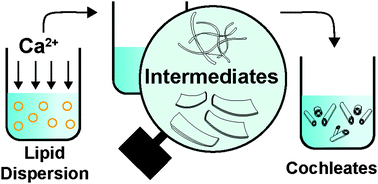Understanding cochleate formation: insights into structural development
Abstract
Understanding the structure and the self-assembly process of cochleates has become increasingly necessary considering the advances of this drug delivery system towards the pharmaceutical industry. It is well known that the addition of cations like calcium to a dispersion of anionic lipids such as phosphatidylserines results in stable, multilamellar cochleates through a spontaneous assembly. In the current investigation we have studied the intermediate structures generated during this self-assembly of cochleates. To achieve this, we have varied the process temperature for altering the rate of cochleate formation. Our findings from electron microscopy studies showed the formation of ribbonlike structures, which with proceeding interaction associate to form lipid stacks, networks and eventually cochleates. We also observed that the variation in lipid acyl chains did not make a remarkable difference to the type of structure evolved during the formation of cochleates. More generally, our observations provide a new insight into the self-assembly process of cochleates based on which we have proposed a pathway for cochleate formation from phosphatidylserine and calcium. This knowledge could be employed in using cochleates for a variety of possible biomedical applications in the future.


 Please wait while we load your content...
Please wait while we load your content...